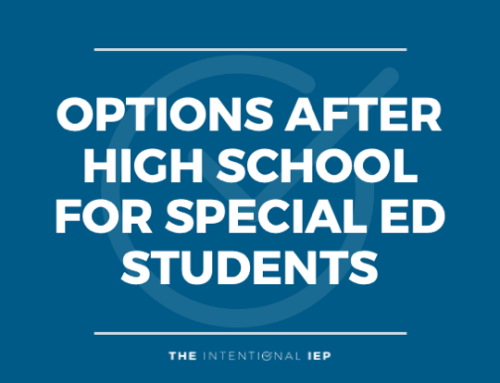Writing IEPs is challenging enough, but when a student has excessive absences and has not been there, it is even more difficult.
Writing an IEP for a student with excessive absences requires determination, honesty, and documentation.
IEPs for Students with Excessive Absences
Before beginning to write the IEP, take a look at why the student has been absent. There may be health issues or other things to consider. However, in many cases, there is no indication as to why the student has not been attending school and the parents provide little insight. It is in those instances when documentation is especially key.
Has There Been Progress?
One of the hardest parts about writing an IEP for a child with excessive absences is that it is difficult to determine how much, if any, progress has been made. The inconsistent attendance makes it difficult to track progression and get an accurate read on a child’s present levels. Collect as much data as you can based on the days when the student was in attendance.
New Year, Same IEP Goals

If there is an open line of communication with the child’s parents, explain this ahead of time so as not to surprise them during an IEP meeting. While most families will be aware of their students’ absences, there may be some that are not. This may be a difficult conversation so consider bringing in your supervisor or head of special education.
Here is a short snippet from one of the trainings inside of TII membership about analyzing data:
If you’re looking for more specifics on IEP like general education collaboration and functional behavior assessments – you’re in the right place!
You can join The Intentional IEP to gain access to over 150+ different IEP related trainings, and access to our IEP Goal Bank. Click the image above to join!
Consider Writing an Attendance Goal
In some instances, it might be appropriate to write an attendance goal for a student. This should be based on your school district’s policies and in collaboration with your supervisor, the school principal, or district representative. With the documentation of absences and how it has impacted the student’s ability to progress and learn, it could be a justified IEP goal.
Review After 30 Days of Attendance
There is nothing wrong with including language in the IEP about revisiting the goals after a student has been in attendance for 30 consecutive days. Within that time a baseline can be established and a student’s progress can be monitored. The documentation may prove that the student has made progress and needs a more robust IEP goal than he currently has, or it may show that he needs more remediation in that area. Either way, reviewing the IEP after a set number of in-attendance days shows that the entire IEP team is committed to helping the student progress and meet him where he is academically.
Excessive absences can cause havoc with a student’s ability to make progress with his IEP goals. Documenting absences, describing how the attendance issues have impacted the ability to get complete data on his current academic levels, and putting in place ways to help him succeed when he is at school are important.
In challenging cases such as this, do not hesitate to seek advice from supervisors and make them aware of the situation long before the IEP meeting.





